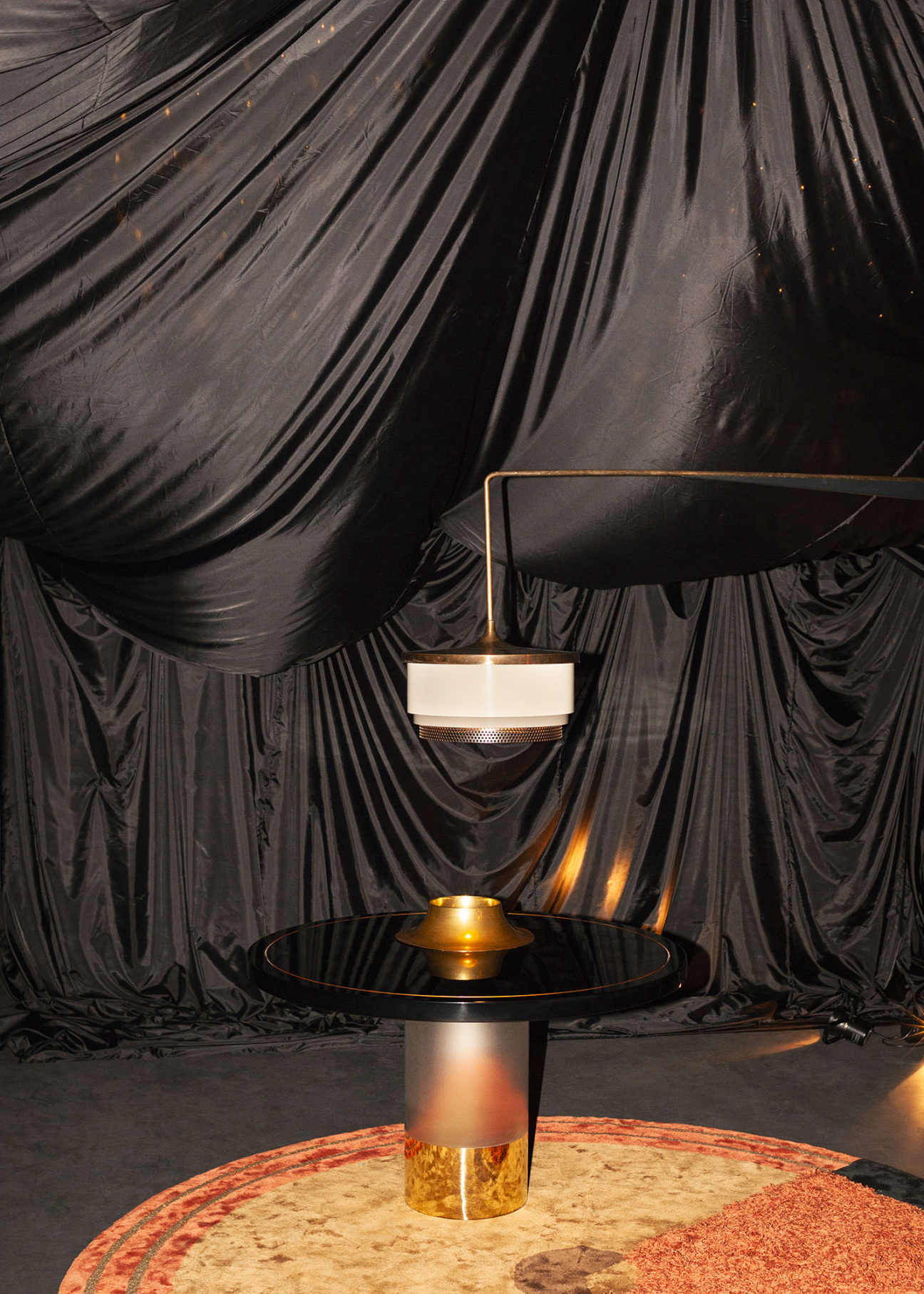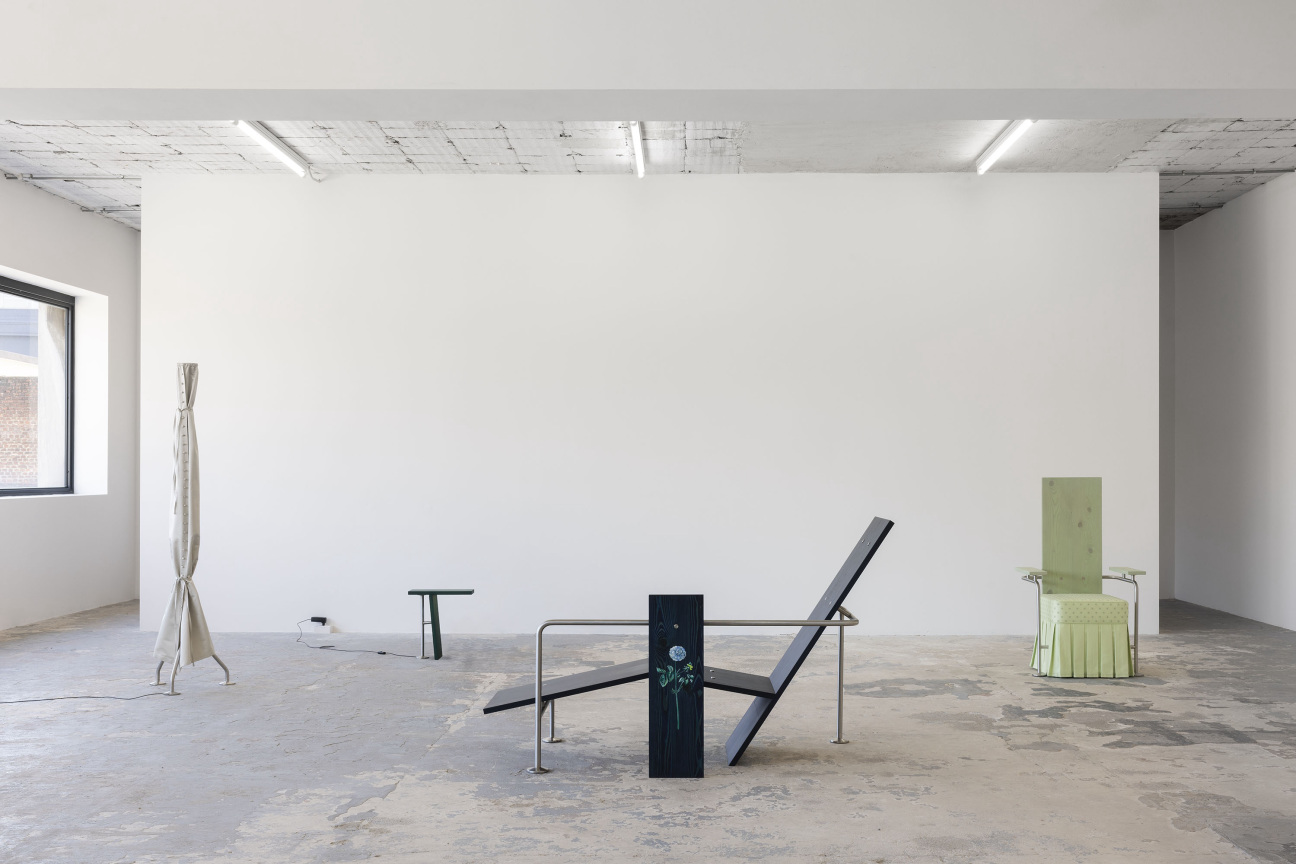
Milan’s annual Salone del Mobile furniture fair has not had a reputation for drama—until this year, when filmmaker David Lynch was tapped to contribute an installation in the middle of the sprawling trade show as part of its cultural program, on view through April 21. There’s a certain logic to inviting the high priest of interiority to design an interior; curator Antonio Monda offered the director carte blanche and was rewarded with “A Thinking Room.”
Actually, two rooms. Part the signature red velvet curtains and step into a darkened chamber dominated by a gleaming wooden throne. Lynch, in an accompanying video interview on display, links the concept to transcendental meditation, but one seat faces a large image of a factory spewing vapor and is flanked on either side by a digital clock and an image of a sawed-in-half animal carcass. Still, the installation has something in common with the best of the collateral presentations around Milan for Design Week: It gets in your head.

That’s also true of a highlight of this year’s festivities, Dimoremilano’s “Attracted to Light” exhibition, on view through April 21 in their Brera gallery, part of a trio of launches for the firm this year. Founders Britt Moran and Emiliano Salci have built a reputation for theatricality, unveiling collections with full-fledged scenography that activates all five senses. Here, a series of moody rooms sheathed in black drapery serve as backdrops for a lean and precise collection of furniture and lighting that merge references from the 1930s, ‘70s, and perhaps a realm outside of time. In a statement, the designers describe hoping to impart “the feeling of dispersive elements in a star-studded night, where the preciousness of each individual object reigns.”

Elsewhere, domestic objects demand less passive encounters. They can be lighthearted, as with Fornasetti’s new “Ceci n’est pas une salle à manger” collection, featuring food- and dining-themed illustrations plucked from its archives. Fruits, flasks, and flatware are imposed on the surface of tables and chests in an amusing “interplay between container and content,” per the brand.
They can be cerebral, as with the studio Formafantasma’s series of uncanny furniture-objects (on view at ICA Milano through July 19) that reclaim the codes of modernism, such as tubular chrome and geometric plywood, by forcing them through a sieve of bourgeois décor derived from personal memories, thereby generating an entirely fresh category of thing.

A more empathic relationship with our material world was on the mind of Martin Clausen, creative director and cofounder of the online platform Adorno. At the emerging-design fair Alcova (through April 21), Adorno is presenting “Animism,” a selection of homewares by various international makers that “emit” unique energies. In the romantically crumbling Villa Bagatti Valsecchi, a walnut slab table by Eero Moss is set for dinner, surrounded by eight radically divergent chairs by eight designers (the COI 01 chair by Togigi has been a crowd favorite).
Even when rendered in common materials like glass or wood, they’re “resonating because they share one common thing: they’ve got personality.” Although often dismissed as superstition, animism, he noted, is one of the world’s oldest belief systems; a feeling that even inanimate rocks possess life. “A show like ‘Animism,’” Clausen says, “is helping to remind us all where we actually come from: a world where humans and objects lived in harmony.”










 in your life?
in your life?

